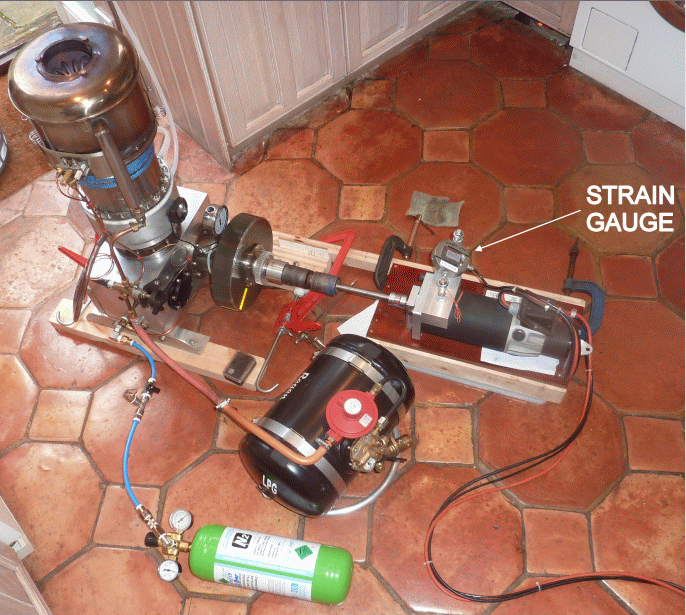Page 28 – The Strain Gauge
Gaspard de Prony’s
brake concept is still true but instead of brake shoes to load the
engine,
we can now use electrical resistance load.
Looking
at the photo,
a DC generator is mounted on gimbals. The generator shaft
must
protrude from both ends of the generator to enable ball bearing
mountings.
In this way, the generator can spin with the
reaction to the force made by generating current.
To
restrain this spinning movement, a strain gauge is mounted between
a post
and a clamp gripping the body of the generator.
The
Stirling engine is then coupled mechanically to the generator
shaft.
The generator output is then taken either to a
bank of resistors or to a set of filament lamps.
Earlier,
I was critical of the use of generators because their efficiency
varies with rpm.
With this method the generator efficiency
does not matter.
The strain gauge reading is thing that
matters.
If the generator is very inefficient, the
generator will get hot and only a little electricity will be
produced. If it is less inefficient, there will be somewhat less
heat and somewhat more electricity. Either way the load on the
strain gauge will be the same – and true.
Should
you have a bank of resistors, or a set of filament bulbs? I favour
the use of car
sidelight bulbs. There is heat generated by
both, but the light bulbs can handle it.
With higher wattage
engines I have had to water cool the resistor bank.
The
distance of the strain gauge form the generator shaft is the prony
brake radius.
Readings are smoother and are more accurate
than with scales and a friction brake.
And there is no
smell of burning (or smoke) from a wooden prony clamp!
